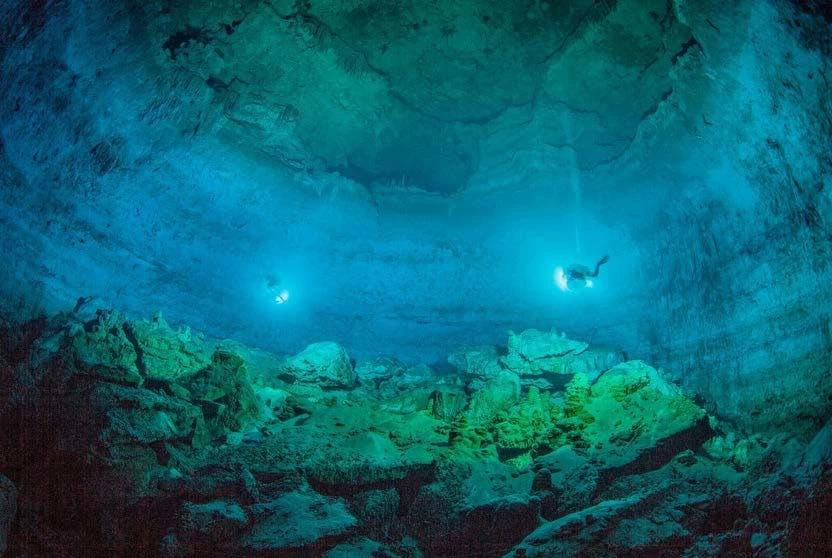Here at New Atlas we cover a wide variety of topics, so it's always interesting to arrive at the end of another year and see what most struck a chord with readers over the past 12 months. This year our top science and technology news stories ranged from ancient death traps and otherworldly weapons to anti-aging breakthroughs and mega-aircraft. Read on to see what captured the imagination of you, our readers, in 2017.
100x faster, 10x cheaper: 3D metal printing is about to go mainstream

Desktop Metal – remember the name. This Massachussetts company is preparing to turn manufacturing on its head, with a 3D metal printing system that's so much faster, safer and cheaper than existing systems that it's going to compete with traditional mass manufacturing processes.
Simulation suggests 68 percent of the universe may not actually exist

According to the Lambda Cold Dark Matter (Lambda-CDM) model, which is the current accepted standard for how the universe began and evolved, the ordinary matter we encounter every day only makes up around five percent of the universe's density, with dark matter comprising 27 percent, and the remaining 68 percent made up of dark energy, a so-far theoretical force driving the expansion of the universe. But a new study has questioned whether dark energy exists at all, citing computer simulations that found that by accounting for the changing structure of the cosmos, the gap in the theory, which dark energy was proposed to fill, vanishes.
How a computer sees history after "reading" 35 million news stories

So far, humans have relied on the written word to record what we know as history. When artificial intelligence researchers ran billions of those words from decades of news coverage through an automated analysis, however, even more patterns and insights were revealed.
A team from the University of Bristol ran 35 million articles from 100 local British newspapers spanning 150 years through both a simple content analysis and more sophisticated machine learning processes. By having machines "read" the nearly 30 billion words, the simple analysis allowed researchers to easily and accurately identify big events like wars and epidemics.
Harvard study uncovers why fasting can lead to a longer and healthier life

Intermittent fasting diets are all the rage these days. We are seeing everything from the conservative 5:2 diet to more extreme fasting methods gaining prominence in Silicon Valley circles, but while there has been plenty of observational research pointing out the correlation between fasting and positive health outcomes, we still don't have a good understanding of any underlying biological mechanism at play.
A new study from Harvard researchers has now shown how fasting can increase lifespan, slow aging and improve health by altering the activity of mitochondrial networks inside our cells.
Iron tools from the Bronze Age found to have otherworldly origins

A weapon as legendary as the dagger of King Tutankhamun needs an epic backstory, and last year X-ray analysis showed that the iron in the ancient blade had come from meteorites. Now, a French study has found that the artifact was far from alone as all iron tools dating back to the Bronze Age have otherworldly origins.
Stratolaunch, the world's largest plane, emerges from its hangar for the first time

After four years of construction, the world's largest plane has just rolled out of its giant hangar for the first time. The Stratolaunch aircraft, which boasts a wingspan greater than a football field, is designed to carry rockets into the stratosphere, where they are released before firing their engines and continuing on into space.
NASA looks at reviving atomic rocket program

When the first manned mission to Mars sets out, it may be on the tail of an atomic rocket engine. The Space Race vintage technology could have a renaissance at NASA after the space agency's Marshall Space Flight Center in Huntsville, Alabama signed a contract with BWXT Nuclear Energy to develop updated Nuclear Thermal Propulsion (NTP) concepts and new fuel elements to power them.
First tests of world's largest plane's massive engines

Back in June, the world's largest plane emerged from its hangar for the first time. Reactions varied from those skeptical about the design ("what an odd bird!"), to straight-up excitement over the innovative plane ("a stunning-looking aircraft!"). Now the team has crossed another milestone by completing the first round of engine testing, continuing the groundwork needed to get the beast into the air in 2019.
Hubble spots a strange new type of celestial object

Astronomers have discovered a brand new type of object in our solar system: an active binary asteroid. That means the object, named Body 288P, is the first known hybrid of two rare types of asteroid: a binary that's made up of two rocks orbiting each other, and an active asteroid that acts more like a comet, leaving a trail of gas and dust in its wake.
Ice Age bones discovered inside inescapable "black hole"

Around the end of the last Ice Age, about 13,000 years ago, animals could roam through subterranean passageways in what is now Mexico. But the creatures who reached the end of those passageways often plunged to their death in a pit descending 180 ft (55 m) into the Earth from which there was no escape. Researchers have been exploring that pit, which is now underwater, and discovering a remarkable collection of fossils. Their findings will be presented at this year's annual meeting of the Society of Vertebrate Paleontology in Calgary, Canada on August 26.
Anti-aging stem cell treatment proves successful in early human trials

The results of two human clinical trials into a stem cell therapy that can reverse symptoms of age-associated frailty have been published, and the indications are that this landmark treatment is both safe and strikingly effective in tackling key factors in aging.










